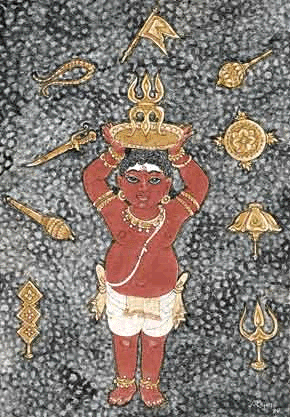
Talk at the End of the Asana & Meditation Class
Friday, April 15th 2022
The Power of the Words of Truth
I have a very active mind, full of things: projects, opinions, plans, amusements, imagination … all sorts of things float around in my mind. It was not until recently that I was able to understand that all this activity comes from the many ideas that I have about who I want to be in the world, which I work so hard on projecting day in and day out. Realizing the need to face this situation in my mind and seeing the trap of its binding effects for myself and others, I have begun to feel that all this mind-stuff is like a time-bomb of karma; sooner or later, it will explode as an emotion, an action or as words that will lead to more mind-stuff and commotion. “I do not want it!” I also noticed recently, that even when there is nothing that I need to do or think about, my mind continues to spin with thoughts and ideas. The situation is so dire, that I have started to want to use the teachings of Yoga more seriously and effectively than ever before.
In search of where to begin working more methodically with my mind, I went into Pranavadipa Volume 87 because from the first time I read it, it had captured my attention strongly as it contains many tips for the practice of discrimination, which I imagined may work for this very purpose. ![]()
I must confess that, actually, it is embarrassing to realize that I am still such a beginner. When I read the Testimony, titled “Deepening Meditation,” by Gopala, a disciple of Shri Mahayogi in Japan, the words Permanence, Purity, Joy and Self stood out first—because I had been thinking about discrimination as a big task, a very difficult thing, when I first saw these four words being referred to as the weapon, my initial thought was, “how can these four little words do so much work?” I did not know how they would help, how we could use these four words, and I did not understand why we need four ideas, not just one, so I found it intriguing. It is clear I had not thought about the meaning of the words much at all.
Gopala goes on to explain how he applied the practice of discrimination by contrasting the mind’s ideas with the Truth over an extended period of time to control his mind’s attachment to objects of desires using the questions—“Is it permanent?”, “Is it pure?”, “Is it joyful or blissful?” and “Is it the true Self?”—as weapons in the battle between the Truth and the pain-bearing-obstacles in his mind: 1) egoism, 2) attachment to what we enjoy and like, 3) attachment to avoiding what we dislike and what perturbs us, 4) clinging to life, and 5) ignorance of the Truth altogether. As I read Gopala’s explanation about how the pain-bearing-obstacles open the way to and feed numerous desires (likes and dislikes, or attraction and repulsion), it leads me to realize that desires have everything to do with the constant activity roaming in my mind, and they are exactly what I need to get rid of!
As I started to think more deeply about these four words—Permanence, Purity, Joy and Self: permanent = something eternal, that is never born or dies; pure = something that has no ego or self-interest; joy or bliss = the freedom from all thoughts and desires, unconditional well-being; and the Self = the Truth itself, the only reality or Existence, the unchangeable—I began to recognize that they are not just words, but that each one represents the Truth itself, wholly and without an ounce of error. The more I ponder on these words, the more I perceive that they contain immeasurable power. Even though I might only be able to perceive just a little bit of the power contained in these words, when I think about their meaning, my mind is automatically intimidated by the possible outcome of a face-off against its own beliefs. This makes me remember that Shri Mahayogi says something like, in front of the Truth, everything else crumbles.
The words of Truth have immeasurable power, nonetheless, seeing how quickly my mind wanted to escape the weapons of discrimination, even from just thinking about the meaning of these words that stand for the Truth, I understood that the battle against the ignorance in my mind must continue. If I allow my mind to seek comfort again, as it has done for so long, my mind will remain unchanged, and the real battle cannot begin. I have begun to come to terms with the fact that, in order to fight against the ignorance in my mind, the process of discrimination has to create enough ripples to shake the foundation that sustains that ignorance! Therefore, following Gopala’s example of how he was practicing discrimination, I decided to go forward using the same questions against one of the strongest tendencies that I see in myself, which is to want to prove that “I know, so you must like and admire me” or the opposite, “I do not know, so come to my rescue or leave me alone.”
I have only tried this a few times in sitting meditation and during the day so far, when I have been able to notice my mind’s tendency acting up. But when I have, my mind felt under attack and vulnerable; for example, when I asked, “Are you seeking something permanent now?”, the honest answer was “No, my mind is seeking to gain temporary results, admiration, support, or sometimes to deflect its ignorance temporarily”; to the question, “Is this action coming from Purity or seeking Purity?”, the answer was, “Purity is egoless, does not want for itself, while my mind is seeking for itself, regardless of what may benefit others”; like so, I asked, “Will this bring true Bliss or Joy?”, and the answer was, “How can my mind bring true Joy if it is seeking joy in the unpredictable, uncontrollable, and unsustainable conditions of the world? …True Joy is beyond conditions”; and when I asked, “Does this thought come from the true Self or seek to know the true Self?”, the answer was, “The true Self only knows and sees and stands completely unaffected by the fluctuations of the mind, it is perfect Stillness.” Indeed, my mind definitely began to feel great discomfort and tried to run away, concerned about encountering this weapon again!
Quite honestly, I didn’t realize the link between these four words, Permanence, Purity, Joy and Self, and the four causes of ignorance, until when recently, after I had already started to practice using them, I heard a fellow gurubai point it out. Of course, Shri Mahayogi reminds us over and over of the four main causes of ignorance:
1) seeing the impermanent as permanent
2) seeing the impure as pure
3) seeing pain as pleasure
4) seeing the non-self (ego-mind) as the Self (the Truth or God)
After hearing it and realizing the connection, I finally began to understand why these words function as a powerful “weapon” in the battle against the ignorance that has taken over our minds. It is because they are the very opposite of ignorance, the Truth itself, like an antidote.
Yet, I also have begun to see that no matter how much I think I understand, in order for me to move forward with this battle, I have to have a strong will and the determination to keep going until my mind gives up, and the ignorance in the mind truly crumbles. Like Gopala, I need to always remember that “I want to live in the Truth!” and that it is possible! For me to continue using the weapon of discrimination, I must be determined not to give up, whether it goes well or not, whether my mind likes it or not. I want to boldly move away from karma and toward Yoga, every time I realize that I am again standing at the fork in the road.
~Karuna
To make a financial contribution, visit our CONTRIBUTION PAGE.
Visit and share our WELCOME PAGE to join our online classes.


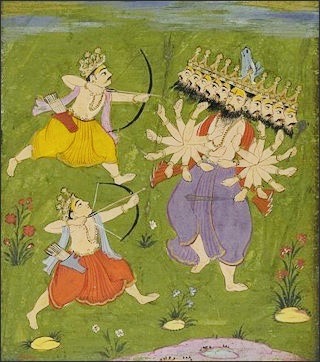

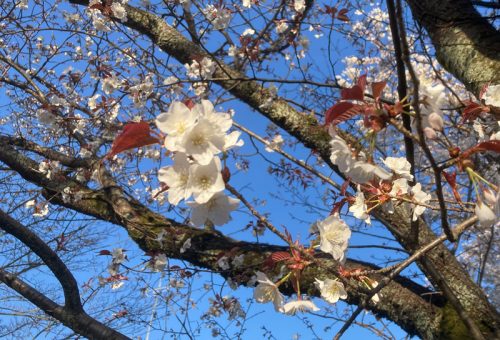
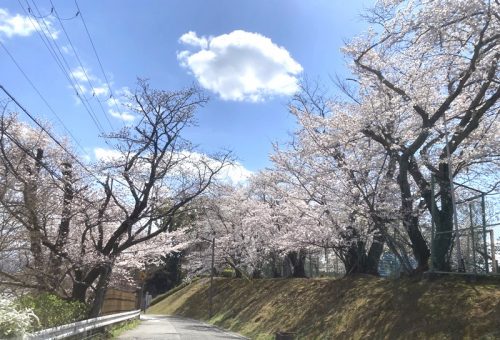

 which all came from their experiences of how they’ve been working towards realizing this invisible Truth within themselves and how they’ve been acting on that in turn within the world;
which all came from their experiences of how they’ve been working towards realizing this invisible Truth within themselves and how they’ve been acting on that in turn within the world;  regardless of their respective backgrounds and life situations, their experiences of what
regardless of their respective backgrounds and life situations, their experiences of what they have perceived about what Sanatana Dharma is, is coming through the demonstration of the way their ideal Holy Being lives
they have perceived about what Sanatana Dharma is, is coming through the demonstration of the way their ideal Holy Being lives .
. each of their highest aims, respectively. And each message was inspiring because what each disciple spoke came from their long-time, single-minded empirical practice.
each of their highest aims, respectively. And each message was inspiring because what each disciple spoke came from their long-time, single-minded empirical practice. Besides messages, there was a video digest of one of the Divine Plays that was created and performed by the Sangha in Japan, and originally offered during one of the past celebrations of Satguru Jayanti that was held at the Mahayogi Yoga Ashrama in Kyoto. Titled, “A Handful of Rice,” it depicted the story of Saint Sudama, who devoted to God Krishna, portraying the importance of offering pure love to God and the unfathomable Grace of God, both of which bring one towards absolute Joy.
Besides messages, there was a video digest of one of the Divine Plays that was created and performed by the Sangha in Japan, and originally offered during one of the past celebrations of Satguru Jayanti that was held at the Mahayogi Yoga Ashrama in Kyoto. Titled, “A Handful of Rice,” it depicted the story of Saint Sudama, who devoted to God Krishna, portraying the importance of offering pure love to God and the unfathomable Grace of God, both of which bring one towards absolute Joy.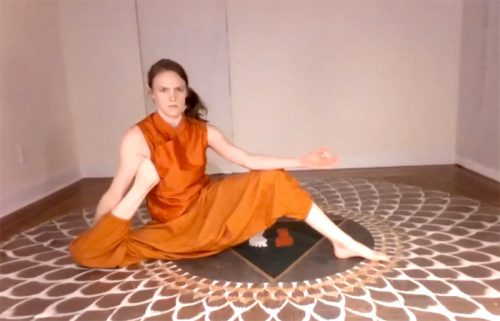 Sadhya, from New York, offered a message titled, Sanatana Dharma and Asana, along with her demonstration of Asana. The concentration and power in her demonstration was breathtaking, suggesting that there is a secret and a deep significance within the Asana that Shri Mahayogi is conveying to us; as Shri Mahayogi has said, “The true meaning of Asana is to abide in Brahman.”
Sadhya, from New York, offered a message titled, Sanatana Dharma and Asana, along with her demonstration of Asana. The concentration and power in her demonstration was breathtaking, suggesting that there is a secret and a deep significance within the Asana that Shri Mahayogi is conveying to us; as Shri Mahayogi has said, “The true meaning of Asana is to abide in Brahman.”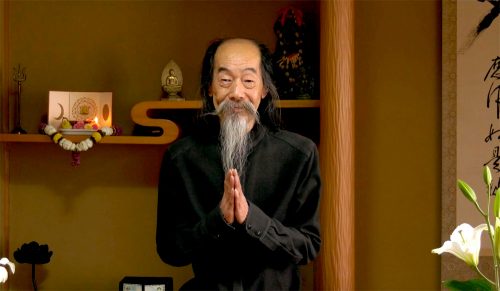

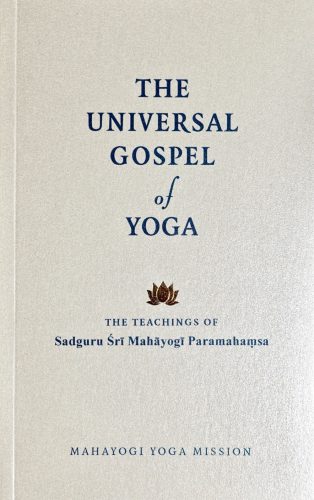 I felt that specific point as the place where I could possibly meet my parents, perhaps even for the first time, in this true Self, in God. When the words came, and my mind received them, I immediately felt ease in my whole person, and the sadness and confusion that had been overwhelming me, lessened greatly. I felt revived and hopeful that if I continued to focus on this teaching, I could find a way to be with my parents and support them through this stage of their lives.
I felt that specific point as the place where I could possibly meet my parents, perhaps even for the first time, in this true Self, in God. When the words came, and my mind received them, I immediately felt ease in my whole person, and the sadness and confusion that had been overwhelming me, lessened greatly. I felt revived and hopeful that if I continued to focus on this teaching, I could find a way to be with my parents and support them through this stage of their lives.